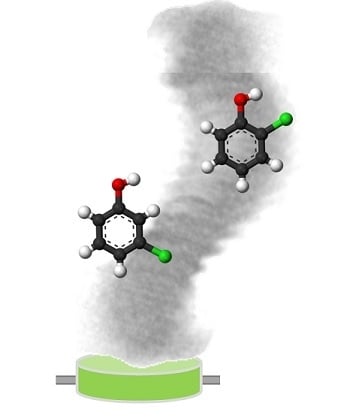Recent Advances in Extraction and Stirring Integrated Techniques
Abstract
:1. Introduction
2. Stir Bar Sorptive Extraction
2.1. Selective Coatings in SBSE
2.2. The Potential of Nanoparticles in SBSE
2.3. ICE Concentration Linked with Extractive Stirrer
3. Stir Membrane Extraction
3.1. Stir Membrane Extraction in the Liquid Phase Microextraction Context
3.2. Adaptations of Stir Membrane Units
4. Stir Cake Sorptive Extraction
5. Stir Disk Extractions
6. Conclusions
Acknowledgments
Author Contributions
Conflicts of Interest
References
- Lucena, R. Extraction and stirring integrated techniques: Examples and recent advances. Anal. Bioanal. Chem. 2012, 403, 2213–2223. [Google Scholar] [CrossRef] [PubMed]
- Cruz-Vera, M.; Lucena, R.; Cárdenas, S.; Valcárcel, M. Sample treatments based on dispersive (micro)extraction. Anal. Methods 2011, 3, 1719–1728. [Google Scholar] [CrossRef]
- Baltussen, E.; Sandra, P.; David, F.; Cramers, C. Stir bar sorptive extraction (SBSE), a novel extraction technique for aqueous samples: Theory and principles. J. Microcol. Sep. 1999, 11, 737–747. [Google Scholar] [CrossRef]
- Wells, M.J.M. Sample Preparation Techniques in Analytical Chemistry; Mitra, S., Ed.; John Wiley & Sons: Hobojen, NY, USA, 2003. [Google Scholar]
- Nogueira, J.M.F. Stir bar sorptive extraction and related techniques. In Analytical Microextraction Techniques; Valcárcel, M., Cárdenas, S., Lucena, R., Eds.; Bentham Science: Sharjah, UAE, 2017. [Google Scholar]
- Lucena, R. Making biosamples compatible with instrumental analysis. J. Appl. Bioanal. 2015, 1, 72–75. [Google Scholar] [CrossRef]
- Zhu, X.; Cai, J.; Yang, J.; Su, Q.; Gao, Y. Films coated with molecular imprinted polymers for the selective stir bar sorption extraction of monocrotophos. J. Chromatogr. A 2006, 1131, 37–44. [Google Scholar] [CrossRef] [PubMed]
- Xu, Z.; Hu, Y.; Hu, Y.; Li, G. Investigation of ractopamine molecularly imprinted stir bar sorptive extraction and its application for trace analysis of β2-agonists in complex samples. J. Chromatogr. A 2010, 1217, 3612–3618. [Google Scholar] [CrossRef] [PubMed]
- Zhong, Q.; Hu, Y.; Hu, Y.; Li, G. Online desorption of molecularly imprinted stir bar sorptive extraction coupled to high performance liquid chromatography for the trace analysis of triazines in rice. J. Sep. Sci. 2012, 35, 3396–3402. [Google Scholar] [CrossRef] [PubMed]
- Turiel, E.; Martín-Esteban, A. Molecularly imprinted stir bars for selective extraction of thiabendazole in citrus samples. J. Sep. Sci. 2012, 35, 2962–2969. [Google Scholar] [CrossRef] [PubMed]
- Zhu, L.; Xu, G.; Wei, F.; Yang, J.; Hu, Q. Determination of melamine in powdered milk by molecularly imprinted stir bar sorptive extraction coupled with HPLC. J. Colloid Interface Sci. 2015, 454, 8–13. [Google Scholar] [CrossRef] [PubMed]
- Xu, Z.; Yang, Z.; Liu, Z. Development of dual-templates molecularly imprinted stir bar sorptive extraction and its application for the analysis of environmental estrogens in water and plastic samples. J. Chromatogr. A 2014, 1358, 52–59. [Google Scholar] [CrossRef] [PubMed]
- Sheng, N.; Wei, F.; Zhan, W.; Cai, Z.; Du, S.; Zhou, X.; Li, F.; Hu, Q. Dummy molecularly imprinted polymers as the coating of stir bar for sorptive extraction of bisphenol A in tap water. J. Sep. Sci. 2012, 35, 707–712. [Google Scholar] [CrossRef] [PubMed]
- Lei, Y.; He, M.; Chen, B.; Hu, B. Polyaniline/cyclodextrin composite coated stir bar sorptive extraction combined with high performance liquid chromatography-ultraviolet detection for the analysis of trace polychlorinated biphenyls in environmental waters. Talanta 2016, 150, 310–318. [Google Scholar] [CrossRef] [PubMed]
- Lin, S.; Gan, N.; Zhang, J.; Qiao, L.; Chen, Y.; Cao, Y. Aptamer-Functionalized stir bar sorptive extraction coupled with gas chromatography-mass spectrometry for selective enrichment and determination of polychlorinated biphenyls in fish samples. Talanta 2016, 149, 266–274. [Google Scholar] [CrossRef] [PubMed]
- Auffan, M.; Rose, J.; Bottero, J.; Lowry, G.V.; Jolivet, J.; Wiesner, M.R. Towards a definition of inorganic nanoparticles from an environmental, health and safety perspective. Nat. Nanotechnol. 2009, 4, 634–641. [Google Scholar] [CrossRef] [PubMed]
- Garcia-Valverde, M.T.; Lucena, R.; Cardenas, S.; Valcarcel, M. Titanium-Dioxide nanotubes as sorbents in (micro)extraction techniques. Trends Anal. Chem. 2014, 62, 37–45. [Google Scholar] [CrossRef]
- Lasarte Aragonés, G.; Lucena, R.; Cardenas, S.; Valcarcel, M. Nanoparticle-based microextraction techniques in bioanalysis. Bioanalysis 2011, 3, 2533–2548. [Google Scholar] [CrossRef] [PubMed]
- Li, P.; Hu, B.; Li, X. Zirconia coated stir bar sorptive extraction combined with large volume sample stacking capillary electrophoresis-indirect ultraviolet detection for the determination of chemical warfare agent degradation products in water samples. J. Chromatogr. A 2012, 1247, 49–56. [Google Scholar] [CrossRef] [PubMed]
- Benedé, J.L.; Chisvert, A.; Giokas, D.L.; Salvador, A. Development of stir bar sorptive-dispersive microextraction mediated by magnetic nanoparticles and its analytical application to the determination of hydrophobic organic compounds in aqueous media. J. Chromatogr. A 2014, 1362, 25–35. [Google Scholar] [CrossRef] [PubMed]
- Benedé, J.L.; Chisvert, A.; Giokas, D.L.; Salvador, A. Stir bar sorptive-dispersive microextraction mediated by magnetic nanoparticles–nylon 6 composite for the extraction of hydrophilic organic compounds in aqueous media. Anal. Chim. Acta 2016, 926, 63–71. [Google Scholar] [CrossRef] [PubMed]
- Hu, C.; Chen, B.; He, M.; Hu, B. Amino modified multi-walled carbon nanotubes/polydimethylsiloxane coated stir bar sorptive extraction coupled to high performance liquid chromatography-ultraviolet detection for the determination of phenols in environmental samples. J. Chromatogr. A 2013, 1300, 165–172. [Google Scholar] [CrossRef] [PubMed]
- Farhadi, K.; Firuzi, M.; Hatami, M. Stir bar sorptive extraction of propranolol from plasma samples using a steel pin coated with a polyaniline and multiwall carbon nanotube composite. Microchim. Acta 2015, 182, 323–330. [Google Scholar] [CrossRef]
- Ekbatani Amlashi, N.; Hadjmohammadi, M.R. Sol-Gel coating of poly(ethylene glycol)-grafted multiwalled carbon nanotubes for stir bar sorptive extraction and its application to the analysis of polycyclic aromatic hydrocarbons in water. J. Sep. Sci. 2016, 39, 3445–3456. [Google Scholar] [CrossRef] [PubMed]
- Fan, W.; He, M.; Wu, X.; Chen, B.; Hu, B. Graphene oxide/polyethyleneglycol composite coated stir bar for sorptive extraction of fluoroquinolones from chicken muscle and liver. J. Chromatogr. A 2015, 1418, 36–44. [Google Scholar] [CrossRef] [PubMed]
- Zhang, W.; Zhang, Z.; Zhang, J.; Meng, J.; Bao, T.; Chen, Z. Covalent immobilization of graphene onto stainless steel wire for jacket-free stir bar sorptive extraction. J. Chromatogr. A 2014, 1351, 12–20. [Google Scholar] [CrossRef] [PubMed]
- Fan, W.; He, M.; You, L.; Zhu, X.; Chen, B.; Hu, B. Water-Compatible graphene oxide/molecularly imprinted polymer coated stir bar sorptive extraction of propranolol from urine samples followed by high performance liquid chromatography-ultraviolet detection. J. Chromatogr. A 2016, 1443, 1–9. [Google Scholar] [CrossRef] [PubMed]
- Maslamani, N.; Manandhar, E.; Geremia, D.K.; Logue, B.A. ICE concentration linked with extractive stirrer (ICECLES). Anal. Chim. Acta 2016, 941, 41–48. [Google Scholar] [CrossRef] [PubMed]
- Alcudia-León, M.C.; Lucena, R.; Cárdenas, S.; Valcárcel, M. Stir membrane extraction: A useful approach for liquid sample pretreatment. Anal. Chem. 2009, 81, 8957–8961. [Google Scholar] [CrossRef] [PubMed]
- Alcudia-León, M.C.; Lendl, B.; Lucena, R.; Cárdenas, S. Valcárcel, Sensitive in-surface infrared monitoring coupled to stir membrane extraction for the selective determination of total hydrocarbon index in waters. Anal. Bioanal. Chem. 2010, 398, 1427–1433. [Google Scholar] [CrossRef] [PubMed]
- Kabir, A.; Furton, K.G. Fabric Phase Sorptive Extractors (FPSE). US Patent Application No. 14.216,121, 2014. [Google Scholar]
- Roldán-Pijuán, M.; Lucena, R.; Cárdenas, S.; Valcárcel, M.; Kabir, A.; Furton, K.G. Stir fabric phase sorptive extraction for the determination of triazine herbicides in environmental waters by liquid chromatography. J. Chromatogr. A 2015, 1376, 35–45. [Google Scholar] [CrossRef] [PubMed]
- Alcudia-León, M.C.; Lucena, R.; Cárdenas, S.; Valcárcel, M. Stir membrane liquid-liquid microextraction. J. Chromatogr. A 2011, 1218, 869–874. [Google Scholar] [CrossRef] [PubMed]
- Alcudia-León, M.C.; Lucena, R.; Cárdenas, S.; Valcárcel, M. Determination of phenols in waters by stir membrane liquid–liquid–liquid microextraction coupled to liquid chromatography with ultraviolet detection. J. Chromatogr. A 2011, 1218, 2176–2181. [Google Scholar] [CrossRef] [PubMed]
- Riaño, S.; Alcudia-León, M.C.; Lucena, R.; Cárdenas, S.; Valcárcel, M. Determination of non-steroidal anti-inflammatory drugs in urine by the combination of stir membrane liquid–liquid–liquid microextraction and liquid chromatography. Anal. Bioanal. Chem. 2012, 403, 2583–2589. [Google Scholar] [CrossRef] [PubMed]
- Roldán-Pijuán, M.; Alcudia-León, M.C.; Lucena, R.; Cárdenas, S. Valcárcel, Stir-membrane liquid microextraction for the determination of paracetamol in human saliva samples. Bioanalysis 2013, 5, 307–315. [Google Scholar] [CrossRef] [PubMed]
- Rodríguez-Gómez, R.; Roldán-Pijuán, M.; Lucena, R.; Cárdenas, S.; Zafra-Gómez, A.; Ballesteros, O.; Navalón, A.; Valcárcel, M. Stir-Membrane solid–liquid–liquid microextraction for the determination of parabens in human breast milk samples by ultrahigh performance liquid chromatography-tandem mass spectrometry. J. Chromatogr. A 2014, 1354, 26–33. [Google Scholar] [CrossRef] [PubMed]
- Roldán-Pijuán, M.; Lucena, R.; Alcudia-León, M.C.; Cárdenas, S.; Valcárcel, M. Stir octadecyl-modified borosilicate disk for the liquid phase microextraction of triazine herbicides from environmental waters. J. Chromatogr. A 2013, 1307, 58–65. [Google Scholar] [CrossRef] [PubMed]
- Alcudia-León, M.C.; Lucena, R.; Cárdenas, S. Valcárcel, M. Magnetically confined hydrophobic nanoparticles for the microextraction of endocrine-disrupting phenols from environmental waters. Anal. Bioanal. Chem. 2013, 405, 2729–2734. [Google Scholar] [CrossRef] [PubMed]
- Alcudia-León, M.C.; Lucena, R.; Cárdenas, S.; Valcárcel, M. Determination of parabens in waters by magnetically confined hydrophobic nanoparticle microextraction coupled to gas chromatography/mass spectrometry. Microchem. J. 2013, 110, 643–648. [Google Scholar] [CrossRef]
- Huang, X.; Chen, L.; Lin, F.; Yuan, D. Novel extraction approach for liquid samples: Stir cake sorptive extraction using monolith. J. Sep. Sci. 2011, 34, 2145–2151. [Google Scholar] [CrossRef] [PubMed]
- Dario Arruda, R.; Causon, T.J.; Hilder, E.F. Recent developments and future possibilities for polymer monoliths separation science. Analyst 2012, 137, 5179–5189. [Google Scholar]
- Welton, T. Room-Temperature ionic liquids. Solvents for synthesis and catalysis. Chem. Rev. 1999, 99, 2071–2084. [Google Scholar] [CrossRef] [PubMed]
- Trujillo-Rodríguez, M.J.; Pino, V.; Ayala, J.H.; Afonso, A.M. Ionic liquids in the microextraction context. In Analytical Microextraction Techniques; Valcárcel, M., Cárdenas, S., Lucena, R., Eds.; Bentham Science: Sharjah, UAE, 2017; pp. 70–134. [Google Scholar]
- López-Darias, J.; Pino, V.; Anderson, J.L.; Graham, C.M.; Afonso, A.M. Determination of water pollutants by direct-immersion solid-phase microextraction using polymeric ionic liquid coatings. J. Chromatogr. A 2010, 1217, 1236–1243. [Google Scholar] [CrossRef] [PubMed]
- Huang, X.; Chen, L.; Yuan, X.; Si, S. Preparation of a new polymeric ionic liquid-based monolith for stir cake sorptive extraction and its application in the extraction of inorganic anions. J. Chromatogr. A 2012, 1248, 67–73. [Google Scholar] [CrossRef] [PubMed]
- Zhang, Y.; Mei, M.; Ouyang, T.; Huang, X. Preparation of a new polymeric ionic-liquid-based sorbent for stir cake sorptive extraction of trace antimony in environmental water samples. Talanta 2016, 161, 377–383. [Google Scholar] [CrossRef] [PubMed]
- Lin, F.; Nong, S.; Huang, X.; Yuan, D. Sensitive determination of organic acid preservatives in juices and soft drinks treated by monolith-based stir cake sorptive extraction and liquid chromatography analysis. Anal. Bioanal. Chem. 2013, 405, 2077–2081. [Google Scholar] [CrossRef] [PubMed]
- Chen, L.; Huang, X. Preparation of a polymeric ionic liquid-based adsorbent for stir cake sorptive extraction of preservatives in orange juices and tea drinks. Anal. Chim. Acta 2016, 916, 33–41. [Google Scholar] [CrossRef] [PubMed]
- Wang, Y.; Zhang, J.; Huang, X.; Yuan, D. Preparation of stir cake sorptive extraction based on polymeric ionic liquid for the enrichment of benzimidazole anthelmintics in water, honey and milk samples. Anal. Chim. Acta 2014, 840, 33–41. [Google Scholar] [CrossRef] [PubMed]
- Chen, L.; Mei, M.; Huang, X.; Yuan, D. Sensitive determination of estrogens in environmental waters treated with polymeric ionic liquid-based stir cake sorptive extraction and liquid chromatographic analysis. Talanta 2016, 152, 98–104. [Google Scholar] [CrossRef] [PubMed]
- Huang, X.; Wang, Y.; Hong, Q.; Liu, Y.; Yuan, D. Preparation a new sorbent based on polymeric ionic liquid for stir cake sorptive extraction of organic compounds and inorganic anions. J. Chromatogr. A 2013, 1314, 7–14. [Google Scholar] [CrossRef] [PubMed]
- Huang, X.; Wang, Y.; Yuan, D.; Li, X.; Nong, S. New monolithic stir-cake-sorptive extraction for the determination of polar phenols by HPLC. Anal. Bioanal. Chem. 2013, 405, 2185–2193. [Google Scholar] [CrossRef] [PubMed]
- Huang, X.; Chen, L.; Yuan, D. Preparation of stir cake sorptive extraction based on poly(4-vinylbenzoic acid-divinylbenzene) monolith and its application in sensitive determination of β-agonists in milk and swine urine samples. J. Hazard. Mater. 2013, 262, 121–129. [Google Scholar] [CrossRef] [PubMed]
- Mei, M.; Huang, X. Determination of fluoroquinolones in environmental water and milk samples treated with stir cake sorptive extraction based on a boron-rich monolith. J. Sep. Sci. 2016, 39, 1908–1918. [Google Scholar] [CrossRef] [PubMed]
- Richter, P.; Leiva, C.; Choque, C.; Giordano, A.; Sepúlveda, B. Rotating-Disk sorptive extraction of nonylphenol from water samples. J. Chromatogr. A 2009, 1216, 8598–8602. [Google Scholar] [CrossRef] [PubMed]
- Giordano, A.; Richter, P.; Ahumada, I. Determination of pesticides in river water using rotating disk sorptive extraction and gas chromatography-mass spectrometry. Talanta 2011, 85, 2425–2429. [Google Scholar] [CrossRef] [PubMed]
- Jachero, L.; Sepúlveda, B.; Ahumada, I.; Fuentes, E.; Richter, P. Rotating disk sorptive extraction of triclosan and methyl-triclosan from water samples. Anal. Bioanal. Chem. 2013, 405, 7711–7716. [Google Scholar] [CrossRef] [PubMed]
- Manzo, V.; Navarro, O.; Honda, L.; Sánchez, K.; Toral, M.I.; Richter, P. Determination of crystal violet in water by direct solid phase spectrophotometry after rotating disk sorptive extraction. Talanta 2013, 106, 305–308. [Google Scholar] [CrossRef] [PubMed]
- Muñoz, C.; Toral, M.I.; Ahumada, I.; Richter, P. Rotating disk sorptive extraction of Cu-bisdiethyldithiocarbamate complex from water and its application to solid phase spectrophotometric quantification. Anal Sci. 2014, 30, 613–617. [Google Scholar] [PubMed]
- Manzo, V.; Miró, M.; Richter, P. Programmable flow-based dynamic sorptive microextraction exploiting an octadecyl chemically modified rotating disk extraction system for the determination of acidic drugs in urine. J. Chromatogr. A 2014, 1368, 64–69. [Google Scholar] [CrossRef] [PubMed]
- Cañas, A.; Richter, P. Solid-Phase microextraction using octadecyl-bonded silica immobilized on the surface of a rotating disk: Determination of hexachlorobenzene in water. Anal. Chim. Acta 2012, 743, 75–79. [Google Scholar] [CrossRef] [PubMed]
- Cañas, A.; Valdebenito, S.; Richter, P. A new rotating-disk sorptive extraction mode, with a copolymer of divinylbenzene and N-vinylpyrrolidone trapped in the cavity of the disk, used for determination of florfenicol residues in porcine plasma. Anal. Bioanal. Chem. 2014, 406, 2205–2210. [Google Scholar] [CrossRef] [PubMed]
- Manzo, V.; Ulisse, K.; Rodríguez, I.; Pereira, E.; Richter, P. A molecularly imprinted polymer as the sorptive phase immobilized in a rotating disk extraction device for the determination of diclofenac and mefenamic acid in wastewater. Anal. Chim. Acta 2015, 889, 130–137. [Google Scholar] [CrossRef] [PubMed]
- Fiscal-Ladino, J.A.; Obando-Ceballos, M.; Rosero-Moreano, M.; Montaño, D.G.; Cardona, W.; Giraldo, L.F.; Richter, P. Ionic liquids intercalated in montmorillonite as the sorptive phase for the extraction of low-polarity organic compounds from water by rotating-disk sorptive extraction. Anal. Chim. Acta 2017, 953, 23–31. [Google Scholar] [CrossRef] [PubMed]
- Roldán-Pijuán, M.; Alcudia-León, M.C.; Lucena, R.; Cárdenas, S.; Valcárcel, M. Stir frit microextraction: An approach for the determination of volatile compounds in water by headspace-gas chromatography/mass spectrometry. J. Chromatogr. A 2012, 1251, 10–15. [Google Scholar] [CrossRef] [PubMed]
- Roldán-Pijuán, M.; Lucena, R.; Cárdenas, S.; Valcárcel, M. Micro-Solid phase extraction based on oxidized single-walled carbon nanohorns immobilized on a stir borosilicate disk: Application to the preconcentration of the endocrine disruptor benzophenone-3. Microchem. J. 2014, 115, 87–94. [Google Scholar] [CrossRef]

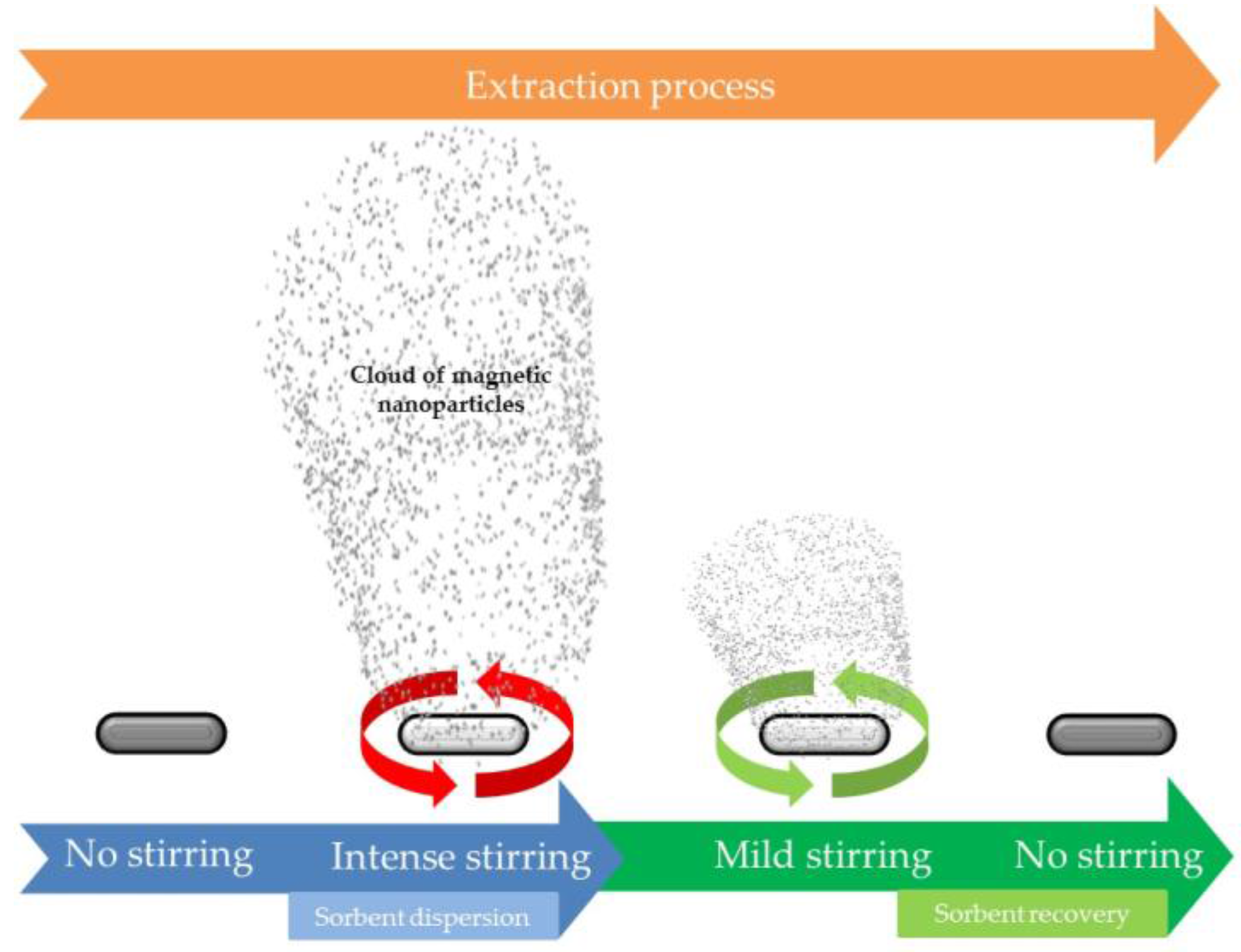
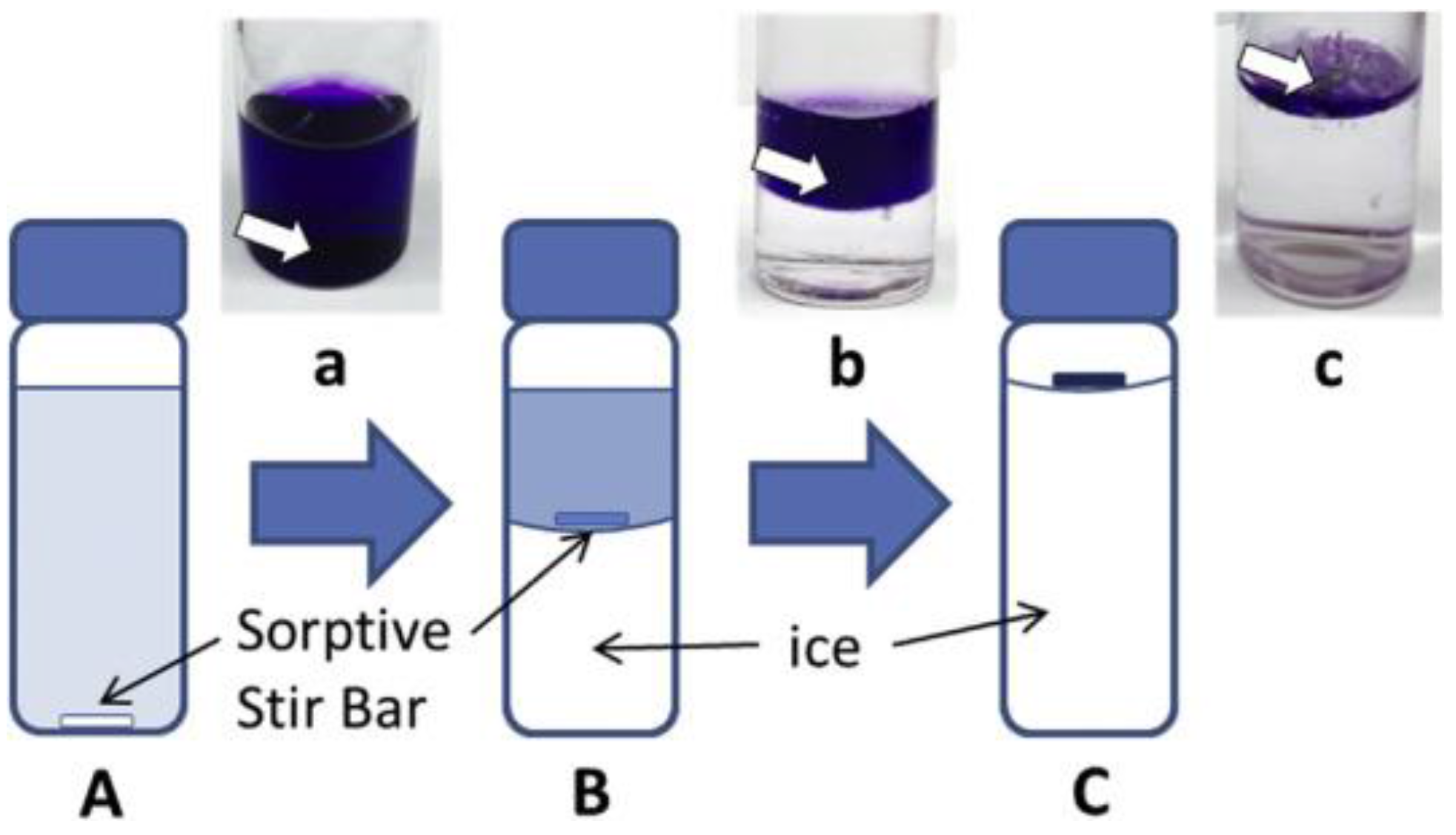
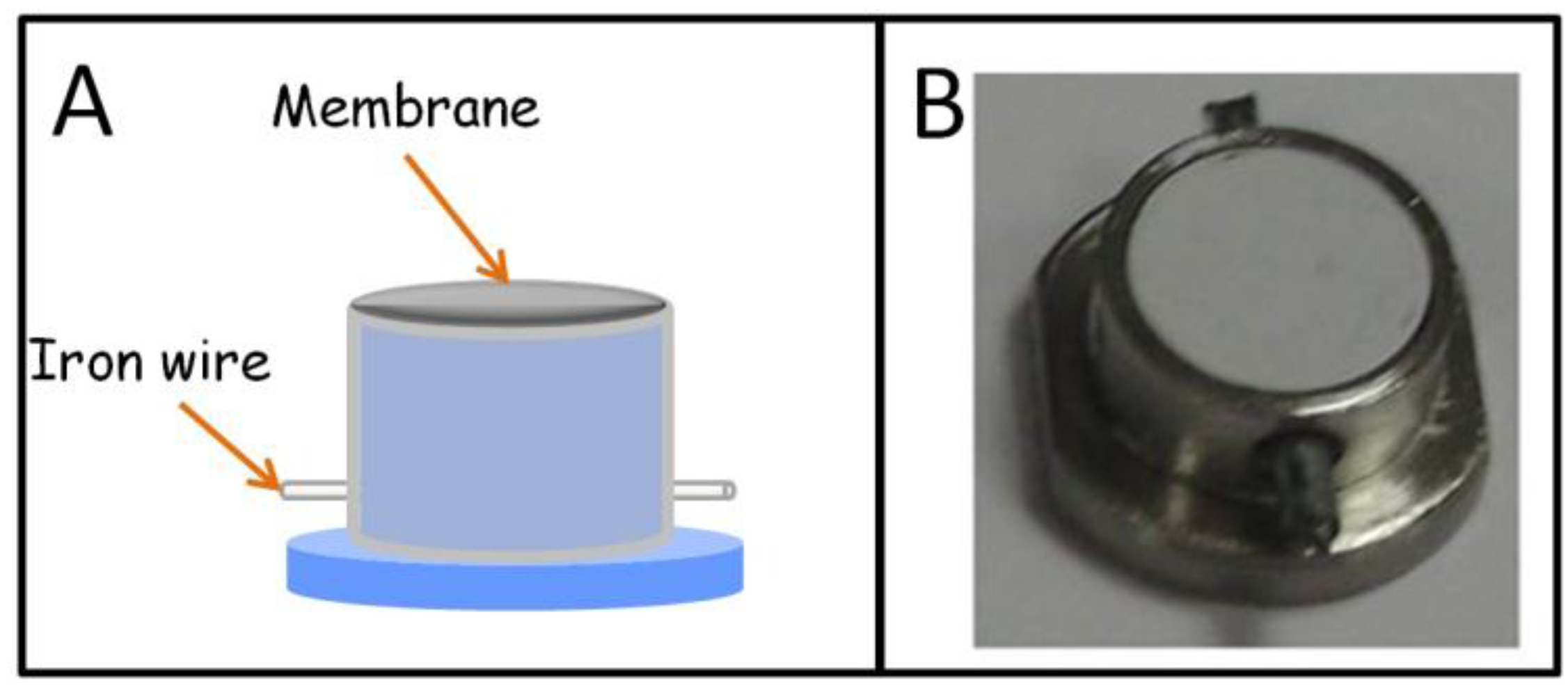
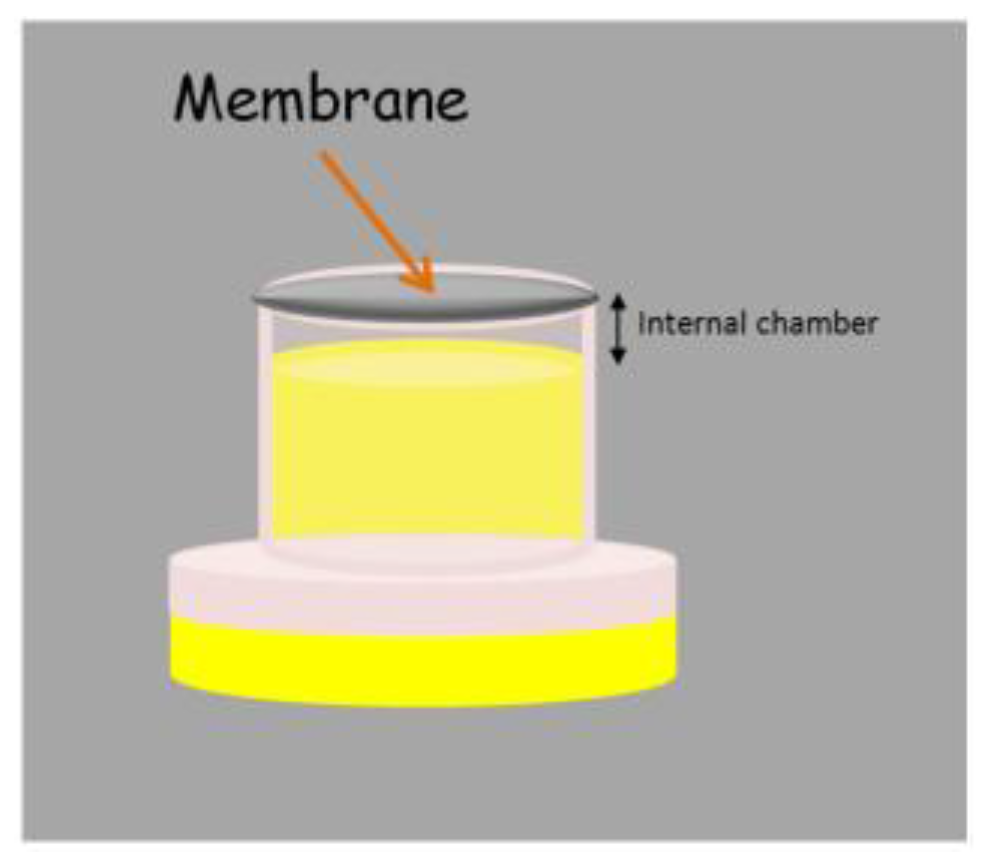
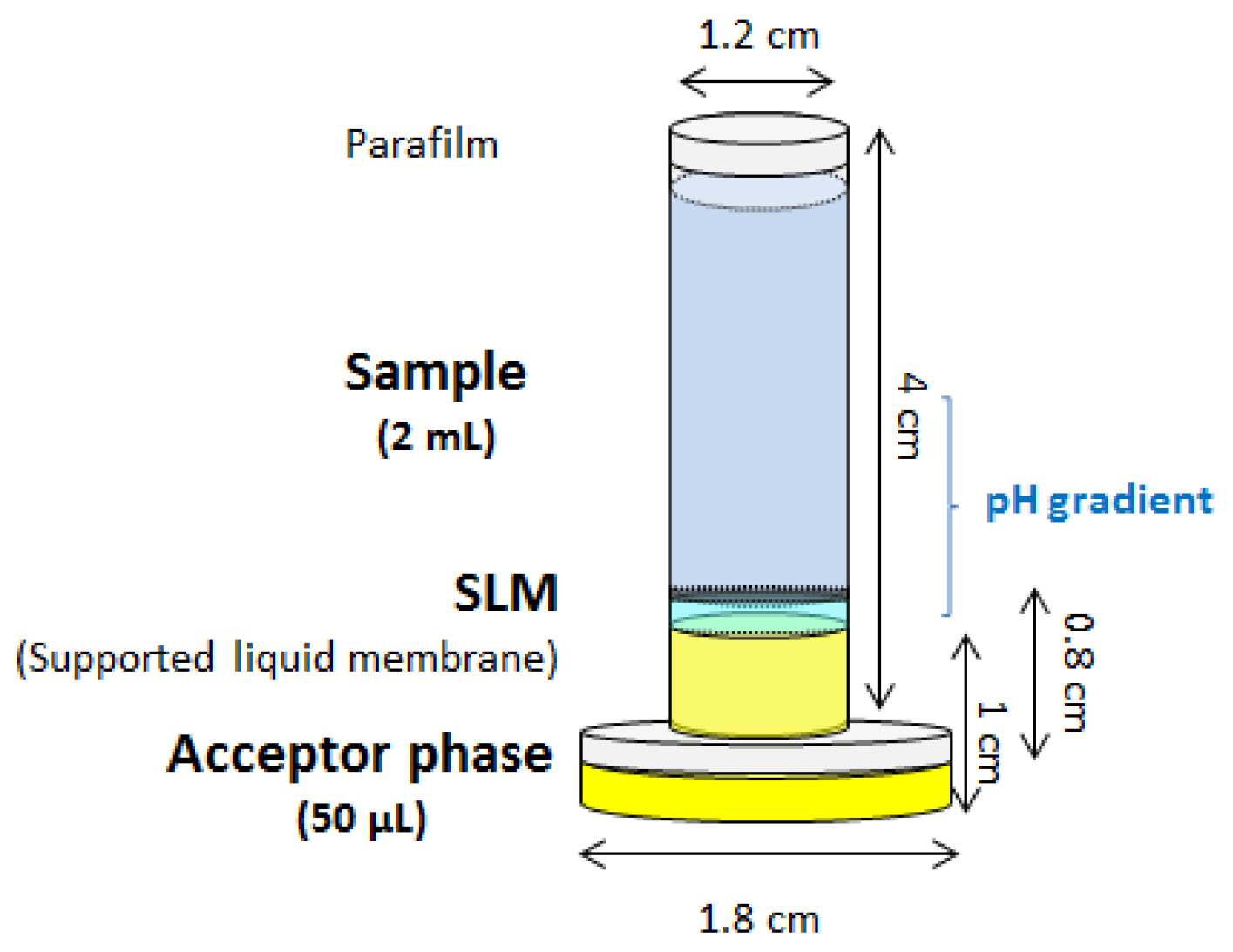

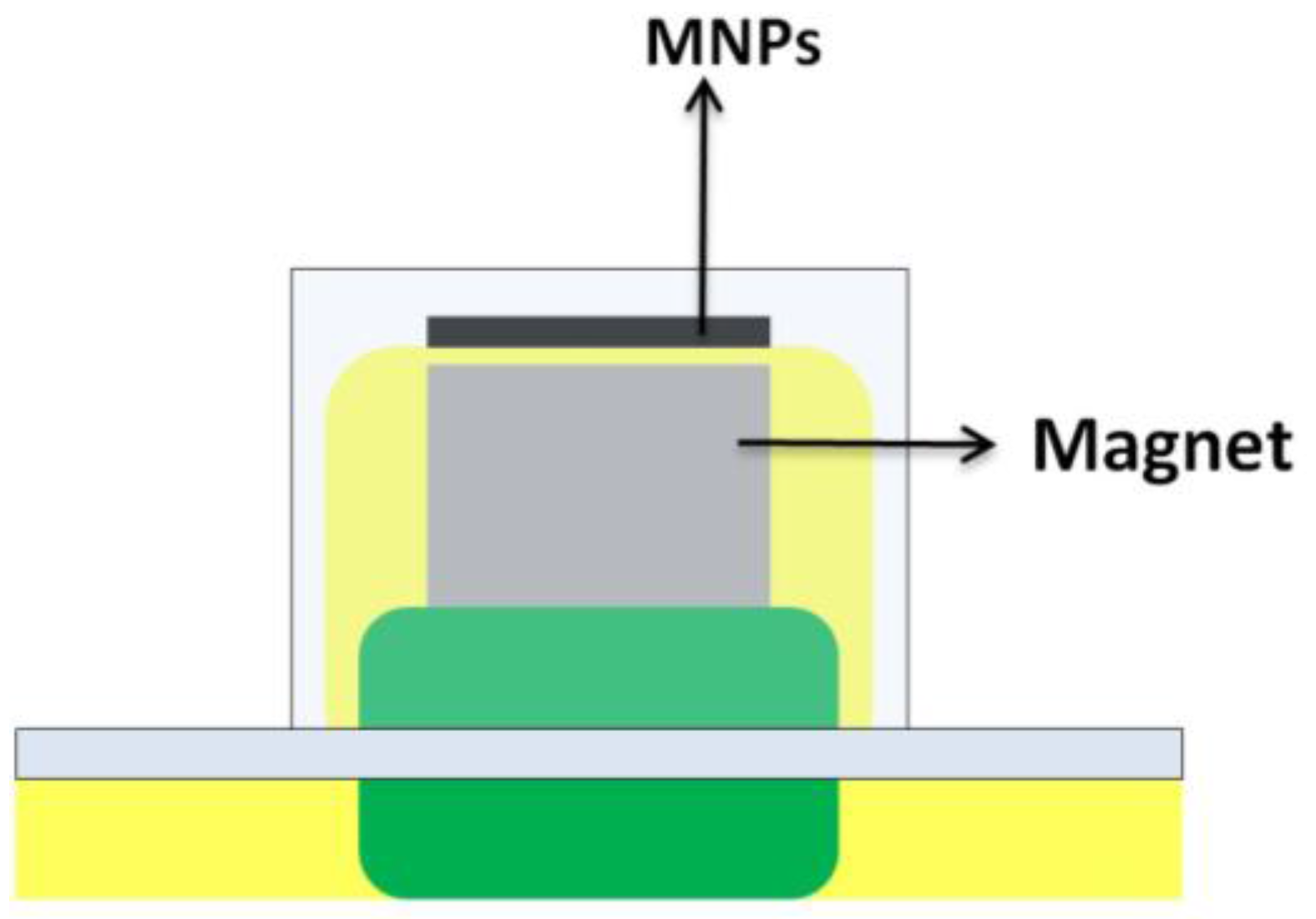

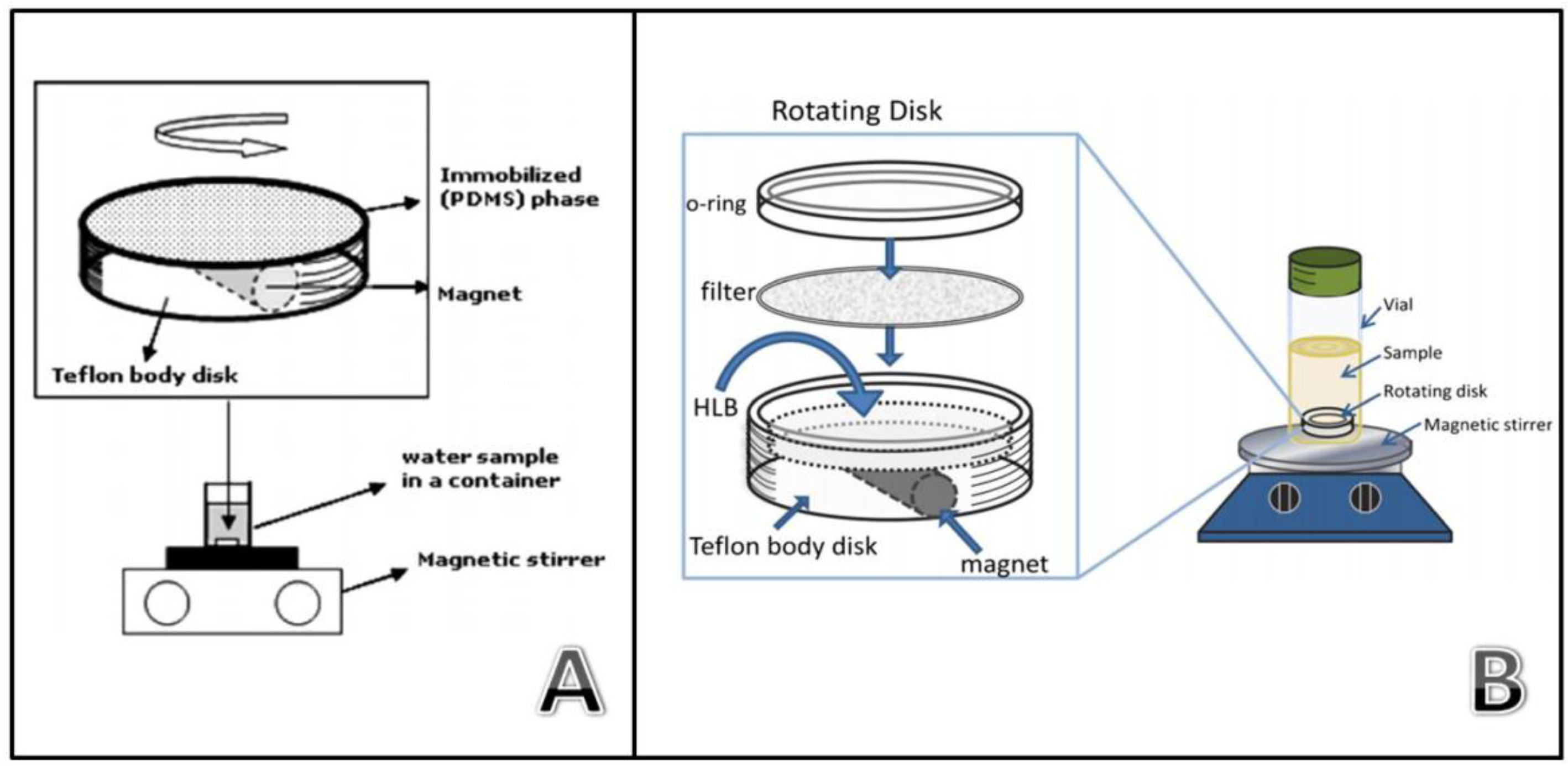
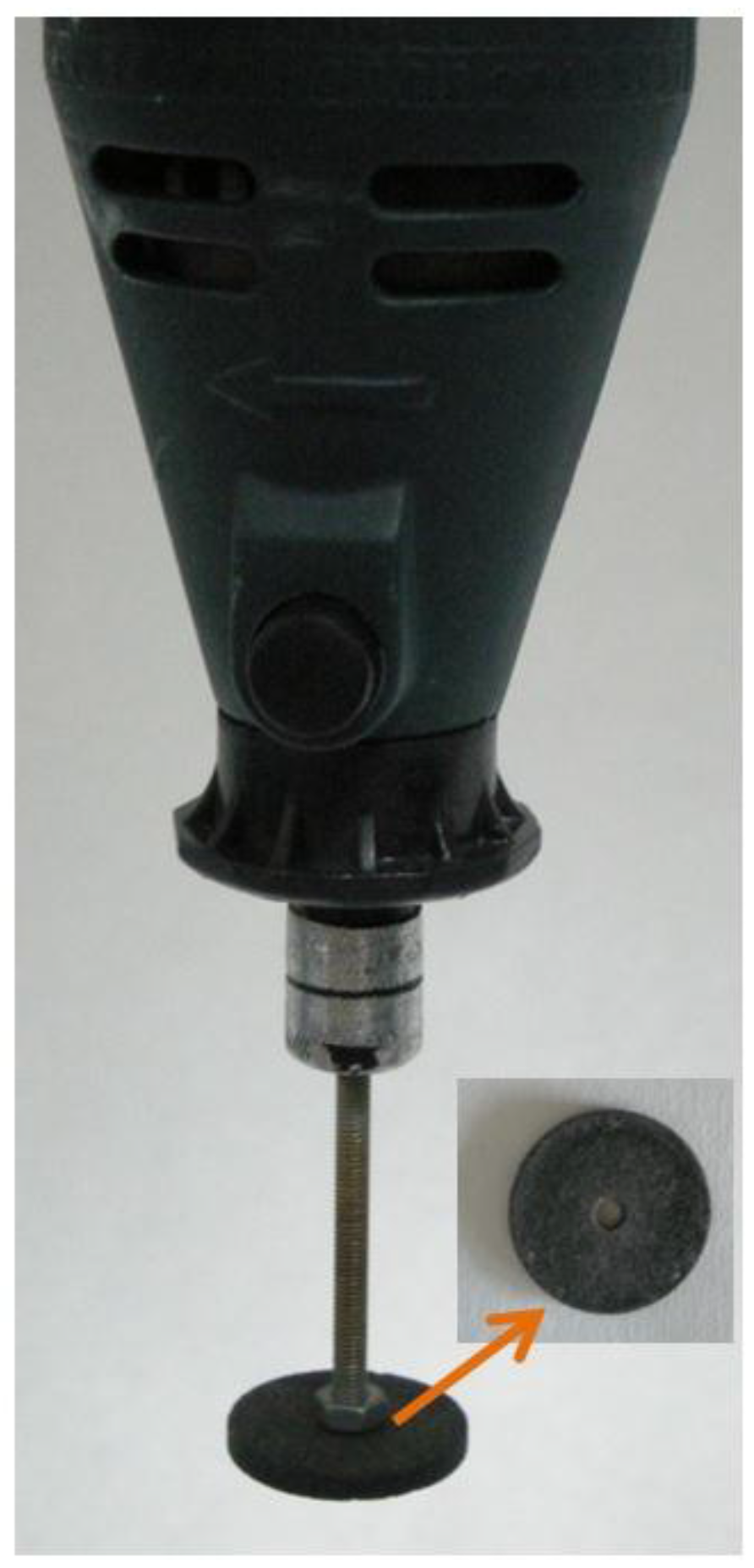
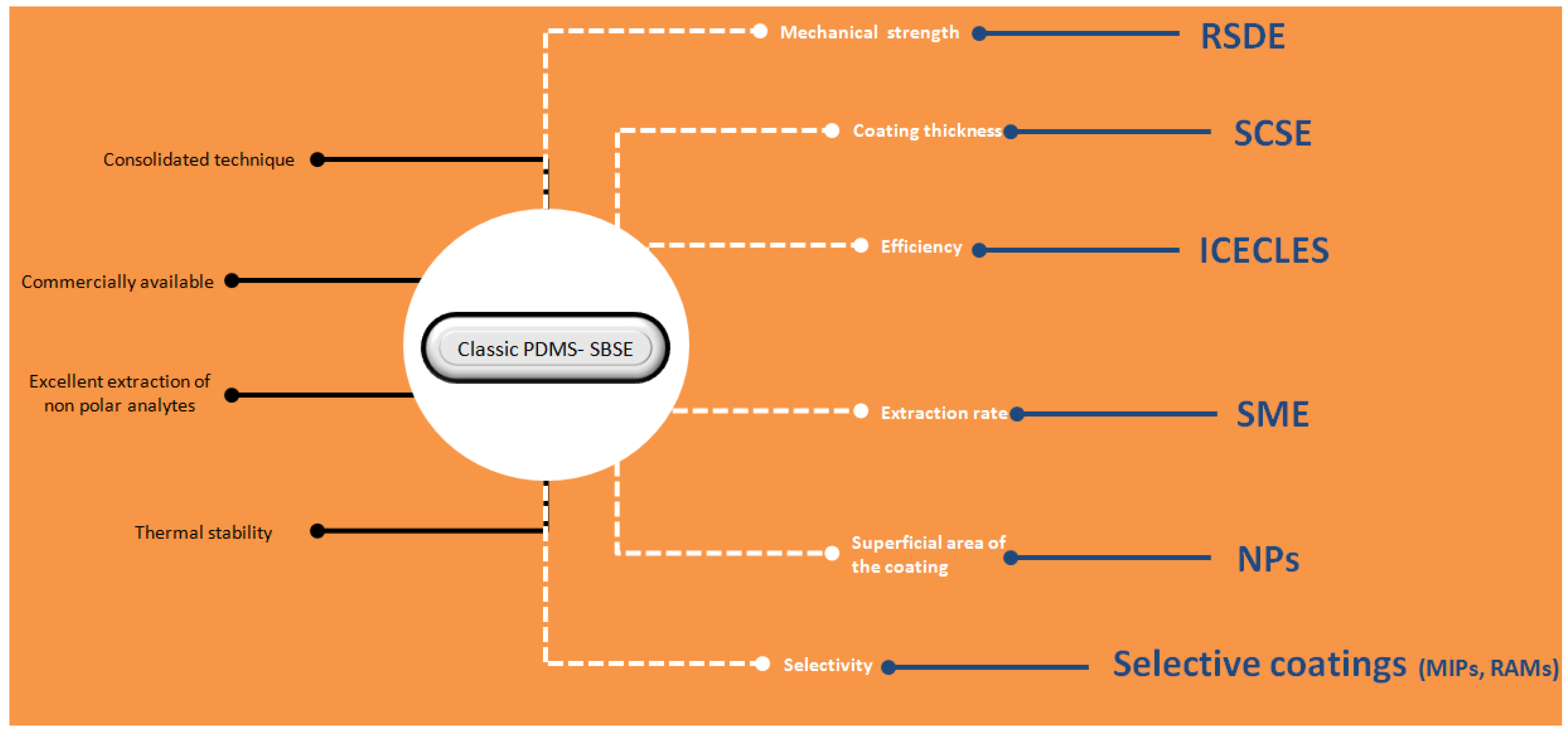
© 2017 by the authors. Licensee MDPI, Basel, Switzerland. This article is an open access article distributed under the terms and conditions of the Creative Commons Attribution (CC BY) license ( http://creativecommons.org/licenses/by/4.0/).
Share and Cite
Cárdenas, S.; Lucena, R. Recent Advances in Extraction and Stirring Integrated Techniques. Separations 2017, 4, 6. https://doi.org/10.3390/separations4010006
Cárdenas S, Lucena R. Recent Advances in Extraction and Stirring Integrated Techniques. Separations. 2017; 4(1):6. https://doi.org/10.3390/separations4010006
Chicago/Turabian StyleCárdenas, Soledad, and Rafael Lucena. 2017. "Recent Advances in Extraction and Stirring Integrated Techniques" Separations 4, no. 1: 6. https://doi.org/10.3390/separations4010006





